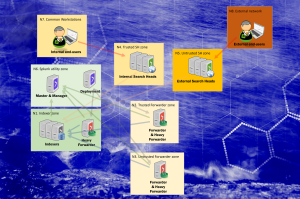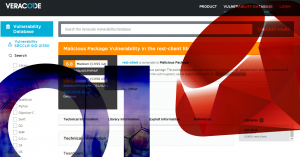The scope of this post
This blog post is a quick analysis of select Splunk advisories containing a set of guiding ideas on how to approach mitigation based on risk.
DISCLAIMER – The author of this blog shall not be held responsible for any negative outcomes that may occur as a result of following advice given in this blog. Caveat emptor – use advice and ideas presented in this blog at your own risk.
All Splunk advisories can be found here: https://advisory.splunk.com/
The threat model used as a base in this blog is explained in more detail here: Trust boundaries and threat actors within the Splunk Enterprise ecosystem
Risky command safeguards bypass in Dashboard Examples Hub (CVE-2024-29946)
Overview
- https://advisory.splunk.com/advisories/SVD-2024-0302
- In Splunk Enterprise versions below 9.2.1, 9.1.4, and 9.0.9 and Splunk Cloud Platform versions below 9.1.2312.100, the Dashboard Examples Hub in the Splunk Dashboard Studio app lacks protections for risky SPL commands.
Threat analysis
The threat falls into zones N4 and N5. These zones have both admins as well as end-users accessing Search Heads.
- Threat 1: A user gets phished and thus tricked into clicking a link that would trigger running bad or “risky” SPL
- Threat 2: A rogue internal user would use this for his or her own benefit
Solutions
- If you have a zone similar to N5
- If you are not using the Dashboard Studio App – disable it permanently and patch when convenient
- If you are using the Dashboard Studio App – disable the app immediately, until you have time to patch
- If you only have a zone similar to N4
- If you are not using the Dashboard Studio App – disable it permanently and patch when convenient
- If you are using the Dashboard Studio App, assess the risk of users getting phished (most likely spearfished) in relation to your Splunk environment – if the risk is high, disable the app immediately, until you have time to patch
- Assess the risk of rogue users abusing this vulnerability (size of userbase is a good starting point) – if the risk is high, disable the app immediately, until you have time to patch
Finally, make sure you are only running the splunkweb process on servers that really need it – removing unnecessary splunkwebs from your infrastructure is part of good hardening practice.
Splunk Authentication Token Exposure in Debug Log in Splunk Enterprise (CVE-2024-29945)
Overview
- https://advisory.splunk.com/advisories/SVD-2024-0301
- In Splunk Enterprise versions below 9.2.1, 9.1.4, and 9.0.9, the software potentially exposes authentication tokens during the token validation process. Normally, Splunk Enterprise runs with debug mode and token authentication turned off.
Analysis
This vulnerability covers corner cases, where defaults in Splunk Enterprise have been deliberately changed for the worse.
The threat falls into zones N4 and N5. These zones have both admins as well as end-users accessing Search Heads – but exploiting this vulnerability requires administrator level privileges (or a heavily misconfigured Splunk instance).
- Threat 1: A rogue Splunk administrator can find the token in the internal indexes and misuse it
- Threat 2: A rogue OS administrator can find the token in the log files on the server
Solutions
- If you are not running Splunk Search Heads in debug mode, patch when convenient.
- If you ARE running Splunk Search Heads in debug mode, first ask your self why. If there is a true reason for doing that, assess the risk of your admins going rogue, then potentially stop the debugging to patch your system, and then finalize your debugging.
Finally, make sure you are only running the splunkweb process on servers that really need it – removing unnecessary splunkwebs from your infrastructure is part of good hardening practice.
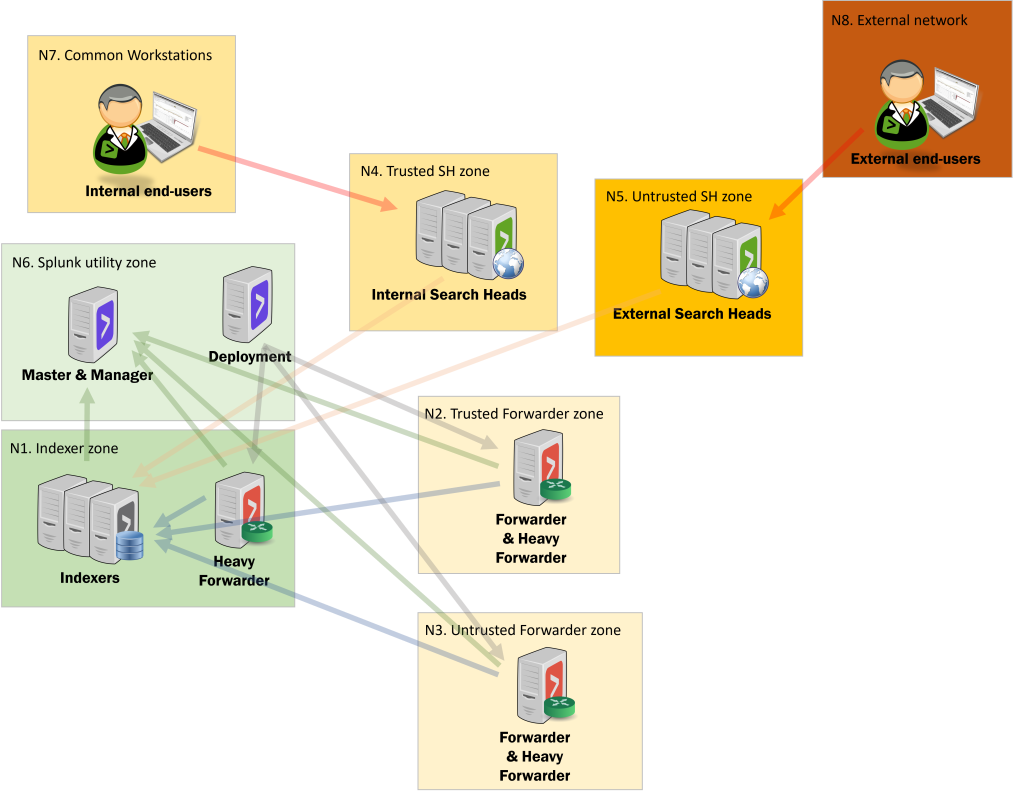
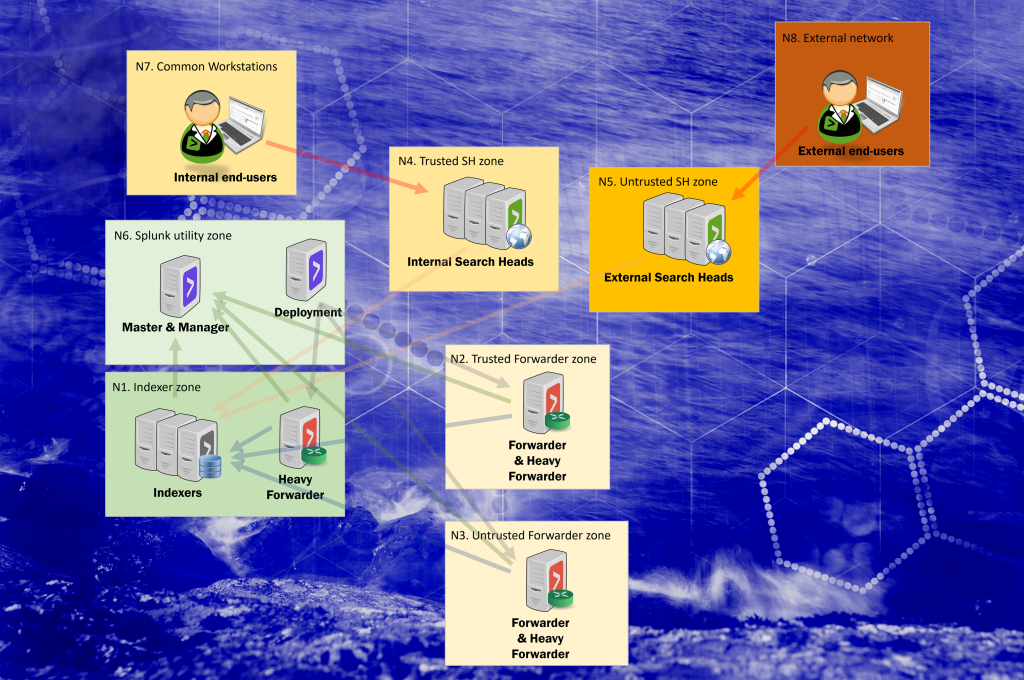
Trust boundaries and threat actors within the Splunk Enterprise ecosystem
Splunk Enterprise (on-premises) can be setup in a vast number of ways, including hardening through network segregation. Splunk components chosen in the diagram are there to highlight where and why trust boundaries may or should be implemented.
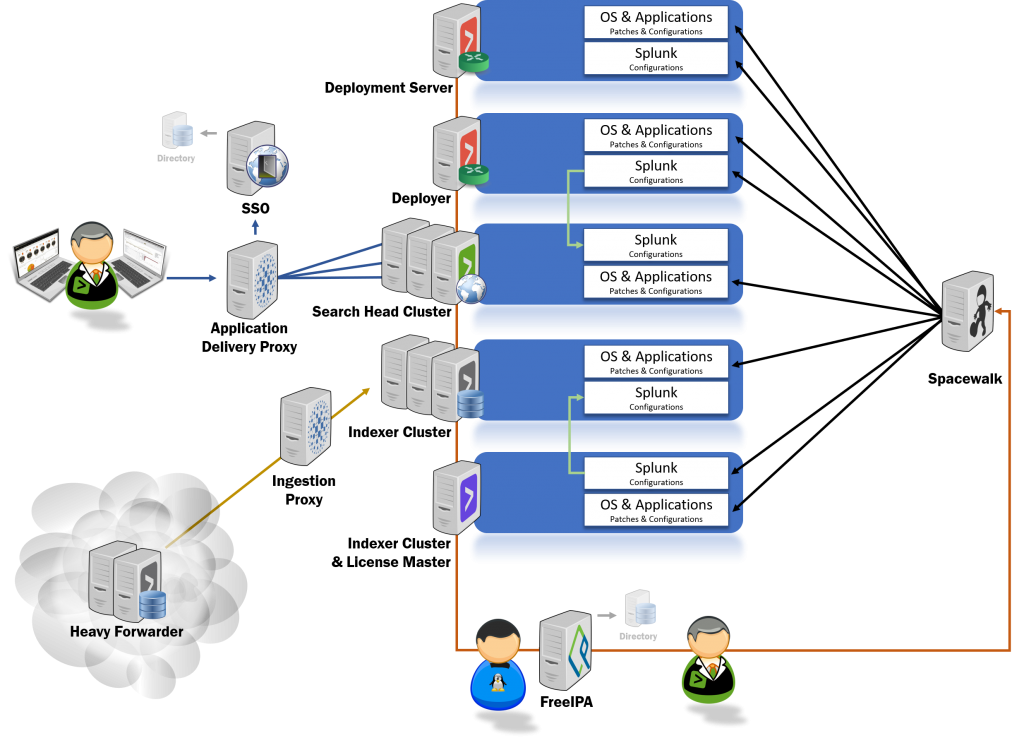
Splunk delivery models
Mint Security has a set of predefined delivery models to choose from. These are based on best practices and experience.
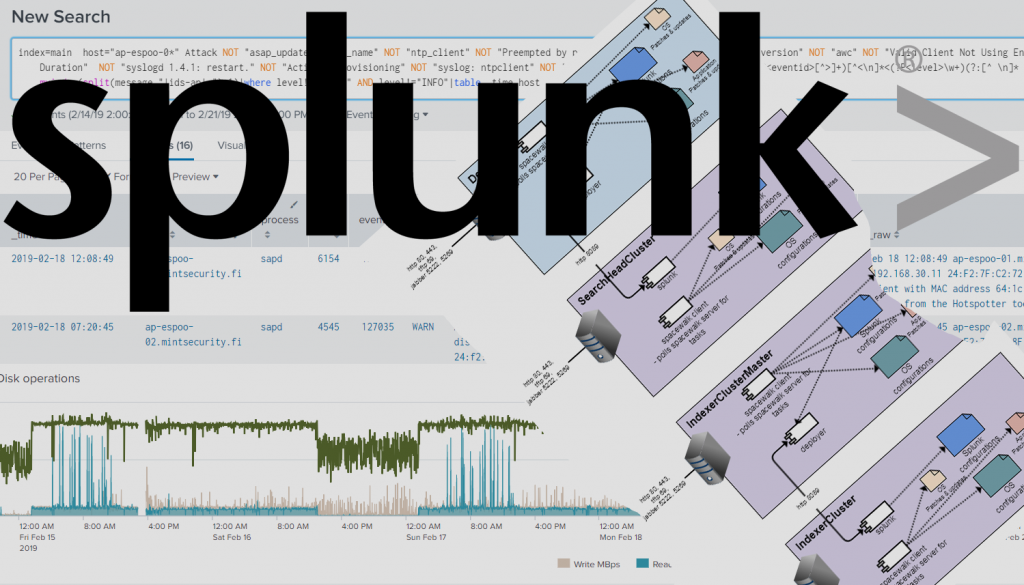
Minted by Splunk
Mint Security is a Splunk partner and a license reseller. In addition, Mint Security provides a vast range of überconsulting for Splunk. From a single server to clustered multisite setups with integrated SSO and 2FA.



